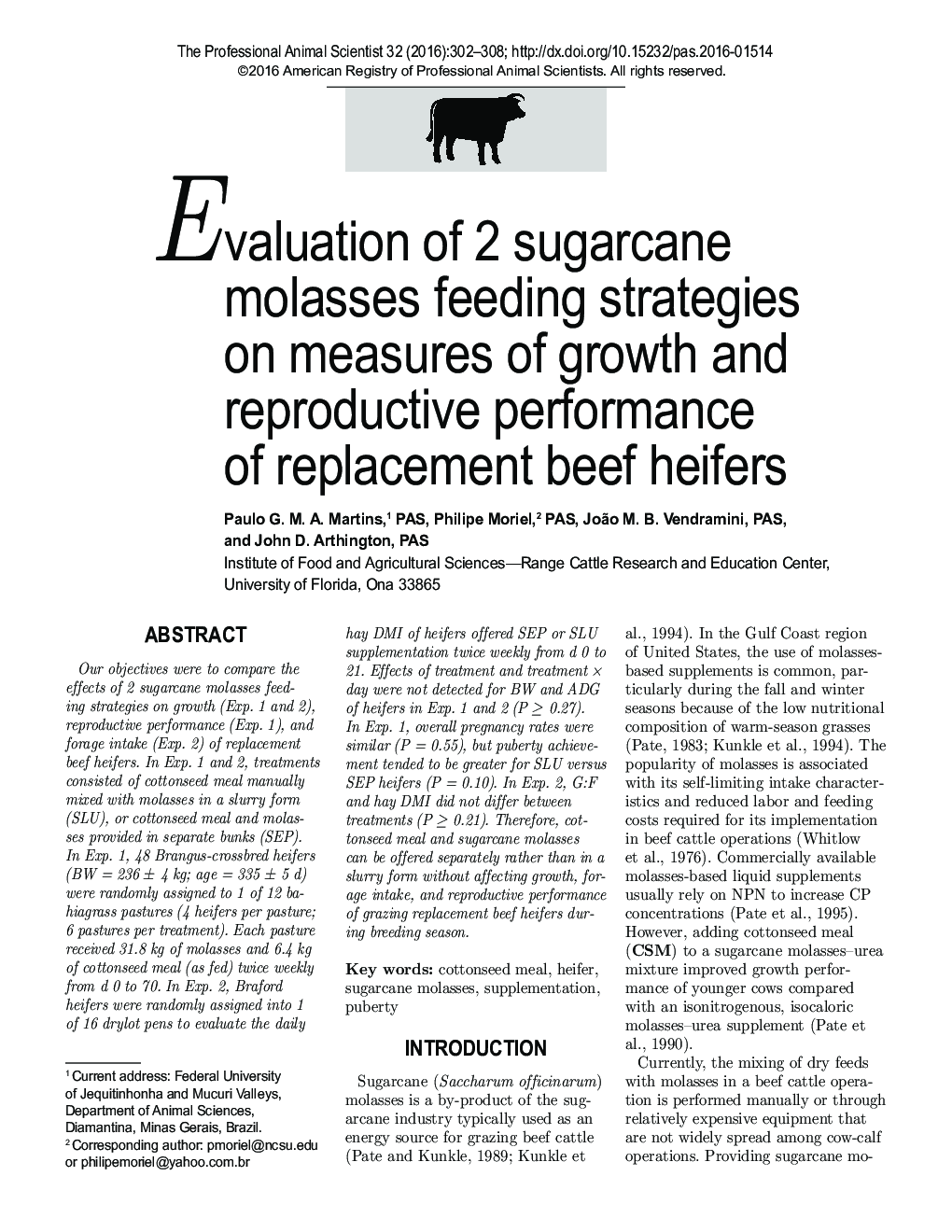| Article ID | Journal | Published Year | Pages | File Type |
|---|---|---|---|---|
| 10161704 | The Professional Animal Scientist | 2016 | 7 Pages |
Abstract
Our objectives were to compare the effects of 2 sugarcane molasses feeding strategies on growth (Exp. 1 and 2), reproductive performance (Exp. 1), and forage intake (Exp. 2) of replacement beef heifers. In Exp. 1 and 2, treatments consisted of cottonseed meal manually mixed with molasses in a slurry form (SLU), or cottonseed meal and molasses provided in separate bunks (SEP). In Exp. 1, 48 Brangus-crossbred heifers (BW = 236 ± 4 kg; age = 335 ± 5 d) were randomly assigned to 1 of 12 bahiagrass pastures (4 heifers per pasture; 6 pastures per treatment). Each pasture received 31.8 kg of molasses and 6.4 kg of cottonseed meal (as fed) twice weekly from d 0 to 70. In Exp. 2, Braford heifers were randomly assigned into 1 of 16 drylot pens to evaluate the daily hay DMI of heifers offered SEP or SLU supplementation twice weekly from d 0 to 21. Effects of treatment and treatment à day were not detected for BW and ADG of heifers in Exp. 1 and 2 (P ⥠0.27). In Exp. 1, overall pregnancy rates were similar (P = 0.55), but puberty achievement tended to be greater for SLU versus SEP heifers (P = 0.10). In Exp. 2, G:F and hay DMI did not differ between treatments (P ⥠0.21). Therefore, cottonseed meal and sugarcane molasses can be offered separately rather than in a slurry form without affecting growth, forage intake, and reproductive performance of grazing replacement beef heifers during breeding season.
Related Topics
Life Sciences
Agricultural and Biological Sciences
Animal Science and Zoology
Authors
Paulo G.M.A. PAS, Philipe PAS, João M.B. PAS, John D. PAS,
